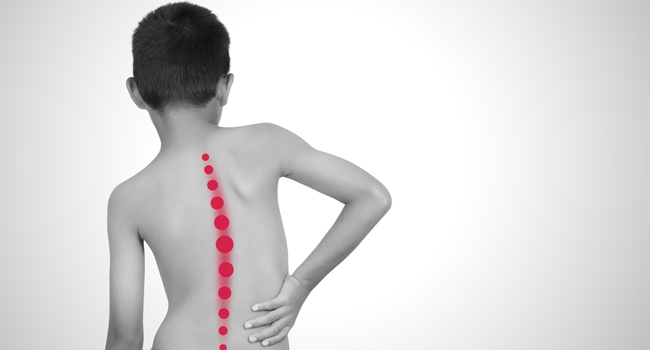Scoliosis
POSTED: 11 May, 2021
1. What is scoliosis?
Scoliosis is an abnormal lateral or sideways curvature of the spine. It is most often diagnosed in childhood or early adolescence (age 10 – 12 years for girls, or 12 – 14 for boys) when growth is most rapid. It can be a C or an S-shaped curvature depending on which level of the spine is involved.
2. What causes scoliosis?
The cause is unknown, but 80-90% of cases occur in otherwise health adolescents. This is called adolescent idiopathic (cause unknown) scoliosis (AIS). 90% of the patients are females but this can occur frequently in males.
We know that scoliosis is not CONTAGIOUS and NOT caused by bad posture, a soft mattress, carrying a heavy school bag or eating junk food.
3. Why is early screening and detection essential?
While very small curves are common and have no significance, about 2% of girls have a curve, which warrants medical observation during the growth period. If treatment is required, the earlier it is undertaken, the better the long term results.
The best way to detect scoliosis is to look for it.
Investigations such as Spinal x-rays and Scanograms will help get clarity about the angulation of the scoliotic curve. In extreme cases, MRI may also be required.
4. How to self detect?
Apart from the outward signs with a teenager standing as illustrated above, the reliable forward bend test is used in the diagnosis.
5. Can IntegratePHYSIO help?
Our Physiotherapists are well trained and equipped to do a comprehensive and detailed individualised assessment:
Main goal of Physiotherapy is to limit curve progression.
Some of our treatment options may include but may not be limited to:
- Spinal bracing and pain management
- Breathing and chest expansion
- Specific Stretching exercises
- Pilates
- Pilates using equipment like the reformer
- Footwear
6. Is treatment successful?
Yes, most patients respond well to a tailor-made strengthening and stretching program specific to their situation. Modern treatment methods including physiotherapy are highly successful and produce excellent results specially when curve is detected early. Surgery is rarely needed.
Recent News
-
Knee and ACL Injuries
Knee and ACL Injuries Knee injuries, including anterior cruciate ligament (ACL) tears, are prevalent in the athletic community, necessitating a proac...
-
Pelvic Girdle Pain in Pregnancy
🌸 Embrace Every Step of Your Pregnancy Journey with Comfort and Confidence! 🌸 Pregnancy is a miraculous chapter in a woman's life, marked by th...
-
Management strategies for Acute Low back pain
Acute Low back pain Back pain is a widespread and often frustrating experience that can impact people across various lifestyles. Understanding the tr...
